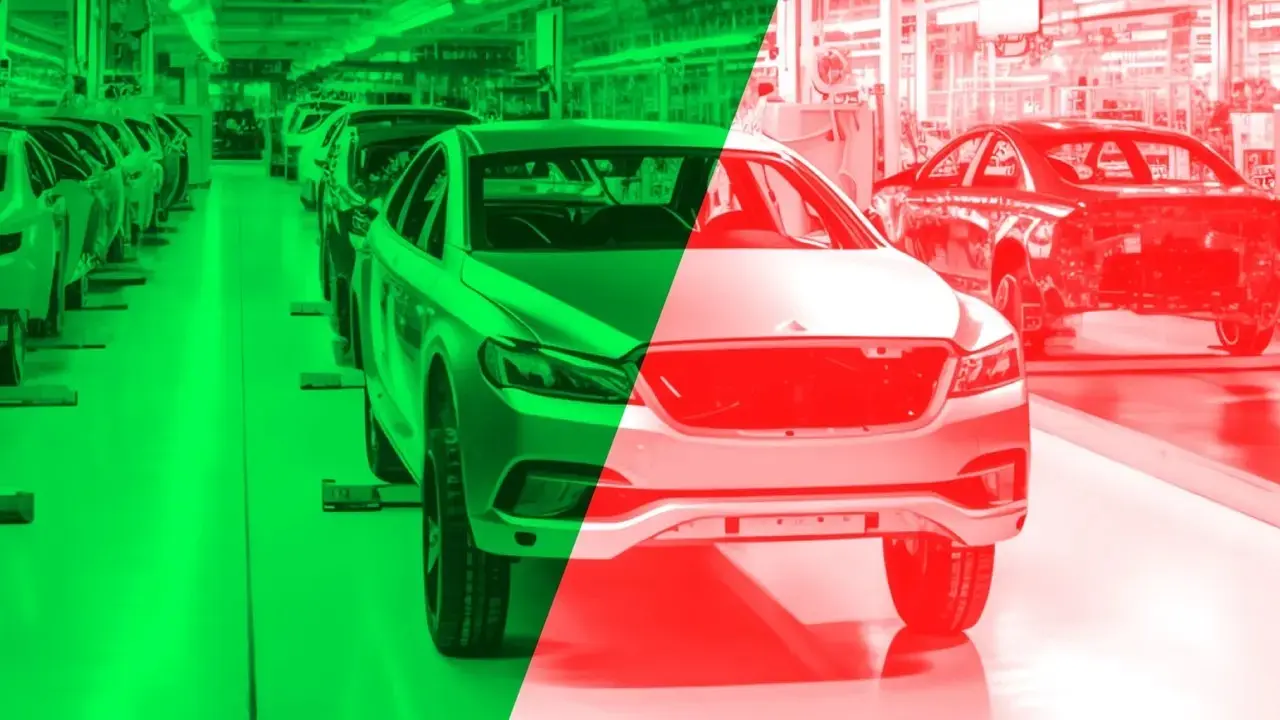Updated 15 May 2025 at 14:19 IST
SIAM: 3.49 Lakh Passenger Vehicles Sold in April 2025
The two-wheeler segment bore the brunt of the slowdown, registering a steep 16.7% drop in sales to 14,58,784 units. The fall was most pronounced in motorcycles, which saw volumes dip 22.7%. Scooter sales were down 5.7%, while mopeds declined 7.6%.
- Republic Business
- 3 min read

SIAM News: India’s automobile sector saw a mixed performance in April 2025, with the passenger vehicle segment notching up record sales for the month even as two-wheeler volumes contracted sharply, according to data released by the Society of Indian Automobile Manufacturers (SIAM) on Thursday.
Driven primarily by strong demand for Sport Utility Vehicles (SUVs), Passenger Vehicle (PV) sales climbed to 3,48,847 units in April, up 3.9% from the same month last year, making it the highest-ever April tally for the segment.
“This is the best April performance on record for passenger vehicles,” said Rajesh Menon, Director General, SIAM. “It reflects stable demand in the segment despite a challenging macroeconomic backdrop.” He noted that the momentum was powered largely by SUV demand, even as the broader industry grappled with varied performance across categories.
Car sales, excluding SUVs, fell by 5.4%, while the utility vehicle sub-segment — which includes SUVs — grew a robust 12.1%. Several automakers registered notable performances in April. JSW, Kia, and Toyota Kirloskar Motor posted strong domestic sales, while Hyundai Motor India Ltd (HMIL), Maruti Suzuki, and Nissan saw a lift in exports. Notably, passenger vehicle exports rose 20%, despite ongoing global geopolitical tensions.
Advertisement
While the wholesale figures include Tata Motors' domestic sales, it excludes data from premium carmakers like BMW, Mercedes-Benz, Jaguar Land Rover, and Volvo Auto.
Also Read: Passenger Vehicle Sales Decline 0.19% MoM, Buyers Await New Launches - FADA | Republic World
Advertisement
Two-wheelers slide in April
In contrast, the two-wheeler segment bore the brunt of the slowdown, registering a steep 16.7% drop in sales to 14,58,784 units. However, the association expects a gradual recovery in the coming months. The fall was most pronounced in motorcycles, which saw volumes dip 22.7%. Scooter sales were down 5.7%, while mopeds declined 7.6%.
Menon attributed the contraction in two-wheeler sales to a high base in April 2024. “We expect the segment to recover in the coming months as the base effect evens out,” he added.
Automakers like Bajaj Auto and Hero MotoCorp witnessed significant setbacks, reporting a 13% and 44% drop in April dispatches, respectively. Hero MotoCorp temporarily halted operations at four manufacturing units from April 17 to 19 for scheduled maintenance and supply chain adjustments. The company expects operations to normalise by May.
Despite the domestic decline, two-wheeler exports grew nearly 15%, offering some relief to manufacturers.
Three-wheelers flatten
The three-wheeler category, meanwhile, remained largely flat, slipping 0.7% year-on-year to 49,441 units. This follows a strong performance in the previous fiscal year, and the current moderation is seen as a stabilisation after last year’s surg. Within the segment, passenger carriers saw a modest rise of 2%, while goods carriers declined by 7.7%. Electric rickshaw sales were down sharply by 36.5%, though e-carts posted a 16.6% increase.
Total vehicle production, including PVs, two-wheelers, three-wheelers, and quadricycles, stood at 23.18 lakh units for the month.
SIAM noted that April also marked a regulatory milestone for the industry. Manufacturers transitioned to the second phase of On-Board Diagnostics (OBD-2) for two- and three-wheelers, in line with updated emission norms. Simultaneously, automakers began rolling out E20-compliant petrol vehicles across the country—an initiative aimed at promoting cleaner fuel usage, according to SIAM DG.
Business Outlook
Industry sentiment remains cautious. While the wedding season and upcoming festive demand are expected to drive retail interest, the Federation of Automobile Dealers Associations (FADA) has flagged concerns about rising costs due to OBD II regulations, sluggish rural demand, and intensifying competition from electric vehicles.
Published By : Avishek Banerjee
Published On: 15 May 2025 at 11:19 IST
